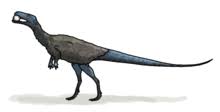
the Pampadromaeus is a fascinating Dinosaur that has piqued the curiosity of paleontologists and captured the imagination of enthusiasts. With its remarkable features and unique place in the evolutionary timeline, the Pampadromaeus presents an intriguing puzzle that continues to shed light on the diversity and evolution of dinosaurs.
Discovered in the geological strata of the Santa Maria Formation in Brazil, the Pampadromaeus was a small, agile dinosaur that lived during the Late Triassic period, approximately 225 million years ago. Belonging to the theropod group of dinosaurs, this bipedal creature measured around six feet in length and displayed an assortment of distinctive characteristics that set it apart from its contemporaries.
| Name: | Pampadromaeus dinosaurs |
| Size: | Approximately 6 feet in length. |
| Main Facts: | Pampadromaeus offers insights into early theropod evolution, featuring lightweight structure, agile limbs, and serrated teeth for predation. |
One of the most striking features of the Pampadromaeus is its lightweight skeletal structure, hinting at its potential for swift locomotion. Its elongated hind limbs, adapted for running and agility, suggest an active lifestyle. The intricate details preserved in the fossil record provide paleontologists with valuable insights into the anatomy and biomechanics of this ancient creature. Its skeletal structure, including the arrangement of its limbs and the morphology of its bones, offers clues about its movement patterns, hunting strategies, and interaction with its environment.

The discovery of the Pampadromaeus also contributes to our understanding of dinosaur evolution. As one of the earliest known members of the theropod lineage, this dinosaur offers crucial insights into the origins and early diversification of these iconic creatures. Its presence in the fossil record helps bridge the evolutionary gap between earlier archosaurs and the more familiar theropods that later evolved into dominant groups such as the tyrannosaurs and raptors.
Pampadromaeus was a small bipedal dinosaur from the Late Triassic period, around 225 million years ago. Measuring about six feet in length, it displayed lightweight skeletal features and elongated hind limbs, suggesting it was an agile runner. With serrated and recurved teeth, Pampadromaeus likely preyed on small vertebrates or insects. As an early theropod, it offers insights into the evolutionary origins of this dinosaur group. Its fossils, found in Brazil's Santa Maria Formation, provide clues about its movement, diet, and its role in the ancient ecosystem, contributing to our understanding of prehistoric life and Earth's history.
Pampadromaeus belongs to the ornithischian group, and comparing it with other early ornithischians provides valuable information about the diversity of this dinosaur lineage. Contrasting its features with those of heterodontosaurs or other basal ornithischians sheds light on the evolutionary trends within this group.
Studying Pampadromaeus in comparison with sauropodomorph dinosaurs allows researchers to explore potential links and transitions between these two major dinosaur groups. This comparison can provide insights into the evolutionary pathways that led to the distinct features of ornithischians.
Comparing Pampadromaeus's dental and cranial features with those of other herbivorous dinosaurs offers insights into its feeding habits and dietary preferences. Contrasts with sauropodomorphs or other early ornithischians can reveal variations in herbivorous adaptations.
Pampadromaeus's bipedal stance distinguishes it from quadrupedal sauropodomorphs and some other ornithischians. Comparing its skeletal structure, limb proportions, and hip structure with those of bipedal and quadrupedal dinosaurs helps us understand locomotion adaptations.
Comparing Pampadromaeus's presence in the Late Triassic of South America with contemporaneous dinosaurs from other regions enriches our understanding of global dinosaur distribution, paleogeography, and biogeographical patterns.
Contrasting Pampadromaeus with carnivorous dinosaurs of the same period, such as theropods, provides insights into predator-prey dynamics and the coexistence of different dinosaur groups within the ancient ecosystem.
Studying Pampadromaeus's features in relation to other basal ornithischians and early dinosaurs helps reveal the sequence of evolutionary changes that occurred during the emergence of ornithischians and their divergence from other dinosaur lineages.